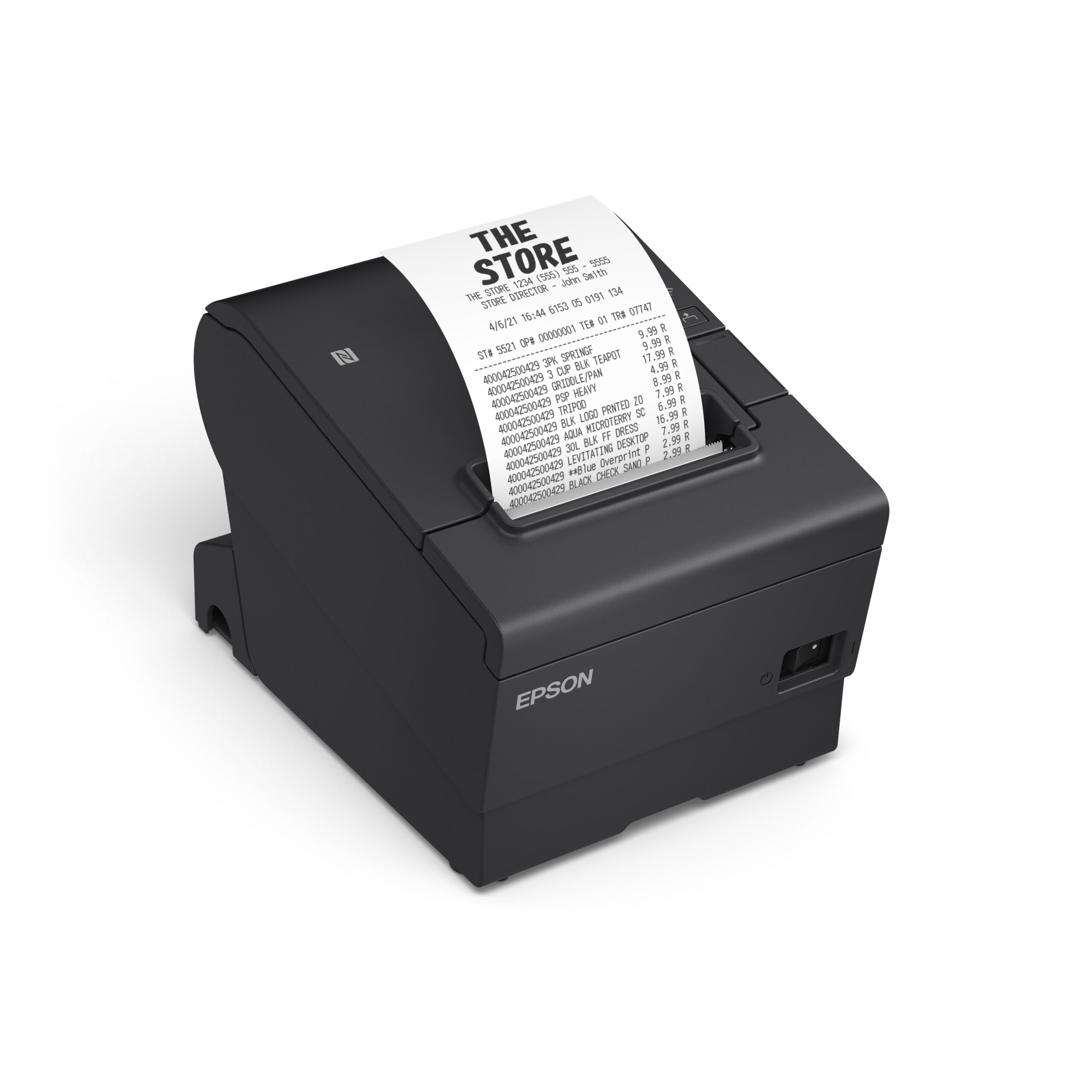These devices are capturing more attention as a diversification opportunity in the dealer channel.
Retailers know that the accelerated shift toward more e-commerce workflows will never go away. COVID-19’s impact continues globally in merchant locations and billions of online orders tax secure server capacities worldwide.
“E-commerce is up more than 40% year-over-year,” noted Jessica Bernardo, senior product marketing manager – label and receipt printer solutions, Toshiba America Business Solutions. This past spring, Adobe Inc. predicted global e-commerce sales would reach $4.2 trillion in 2021, with U.S. consumers accounting for close to one-quarter of that spending. Around the world, an estimated 2.14 billion people are expected to purchase goods online this year, according to Statista, and total e-commerce sales could grow to nearly $6.5 trillion by 2024.
Persistent concerns about the Omicron variant of coronavirus have kept the hospitality industry, especially restaurants, on edge. During the first year of the pandemic, many on-premise ordering systems were pushed online to cloud- and web-based infrastructures. With change comes opportunity, and innovative partners can help to make tech transitions more seamless.
“The ability to support in-store delivery for pickups is paramount,” said David Vander Dussen, product manager, Epson America. But maintaining service standards without disruption can be an expensive proposition. “There are increased labor costs incurred,” he pointed out, for order pulling and other inventory-management functions. The present-day fulfillment structure is more complex, too. Vander Dussen called it the “Amazon effect,” the so-called last-mile delivery of shipments that are expected to come direct from distribution centers or stores within a day’s time or maybe two days at most.
Almost two years into the pandemic, investments continue to support efficiencies in digital-ordering channels. “Many of our customers are beefing up back-end, connection processes and hardware to handle multiple ordering processes,” said Vander Dussen, citing Epson’s flexibility to support all workflows simultaneously as a feature that is very attractive to end-users. From multiple devices, including mobile to cloud computing, Epson point-of-sale (POS) printers have been engineered to integrate seamlessly and painlessly, he stressed, making online ordering a virtual breeze to accommodate. The OEM prides itself on facilitating complete transactions, according to Vander Dussen, and leveraging online ordering is part of its value-added proposition.
Shrinking Stores
Some of the money needed for more labor and enhanced infrastructure is coming from square footage repurposing. “Merchants are taking space away from displaying products inside stores,” said Vander Dussen. Earlier this year, a Best Buy test store in Minnesota reduced its square footage by some 40%.
Best Buy has begun expanding a store format with less space for shoppers and more space for shippers. The parent company plans to use more stores as mini-warehouses and is overhauling locations by converting some of their retail square footage into space for order fulfillment or pickup. In this micro-warehouse model, high-priority items can be set aside in employee only fulfillment areas, requiring substantially less overall square footage. The new design cuts the amount of shoppable retail space from about 27,000 square feet to 15,000 square feet, according to a February 2021 Business Journal article.
Best Buy stores typically run around 35,000 to 40,000 square feet in total, including backroom space and customer-service areas. The new design transfers more of that total footprint to areas where staff can prepare digital orders for delivery or customer pickup. CEO Corie Barry predicts that Best Buy could eventually reconfigure as many as 250 of its 1,000 stores into miniature delivery hubs.
When it comes to POS and receipt printers in locations like these, time is money. “If a roller or printhead can be replaced in five seconds instead of 15 seconds, it makes a difference,” said Toshiba’s Bernardo. Decreased downtime always is an attractive benefit, too. “Fewer fixes have direct impact on the bottom line,” she added. To that end, Toshiba believes IP (Ingress Protection) ratings can help reassure dealers and end-users about product reliability and durability.
Epson introduced its next-generation receipt printer this past summer. In addition to being fast, Epson says the OmniLink TM-T88VII thermal receipt printer is easy to work with and includes consolidated software tools for flexible connectivity. Integration runs deep in this device, from Microsoft Windows to mobile-based apps (both Android and IOS), making this POS device ideally suited for the hospitality, retail, grocery, and banking sectors.
“When it comes to completing customer transactions and keeping lines moving, we understand that merchants need a printer they can depend on for high-volume checkout environments,” said Vander Dussen. In October 2021, Epson introduced a new, compact thermal receipt printer optimized for self-checkout and self-ordering kiosks in response to the self-service push. The EU-m30 comes with a mounting kit for kiosk integration and serviceability.
Servicing POS
What types of training and experience are necessary for dealer personnel to service these products effectively? Epson’s Advantage Partner Program handles service through the dealer channel. On the POS side, there are programs and initial training at its distribution center near Indianapolis. Epson also offers dealerships priority access to parts and provides resources for technicians to become Epson-certified, which can be an asset when dealing with parts issues.
For Toshiba’s partners, dealer members of the Business Technology Association (BTA) are directed to the same toll-free, 800-number help line used for copiers and MFP customers. “If questions are too specific to receipt or label printing, they are directed to a different team,” explained Tony Venice, product marketing director at Toshiba.
The Latest in Low- to High-End Label Printing
COVID-19 was a boon for label printing in the fourth quarter of 2020 and throughout 2021, as well as for the manufacturers selling the equipment that prints them. Financially, Konica Minolta has had some of its best months selling these devices in 2021, according to Russell Doucette, product marketing manager for Konica Minolta’s labeling products. Just how good have 2021 sales been? “Normally, we might sell one or two presses per month,” Doucette shared. “But during COVID, we were selling six to eight [per month].”
Despite some supply chain hiccups involving adhesives and substrates, it has been a very good year, with profit margins up some 50%, he reported. Konica Minolta’s 18,500-square-foot Customer Engagement Center (CEC) in Ramsey, New Jersey, closed for two weeks during the start of the outbreak (spring 2020) but, Doucette says it was back operating at full staff about a month later. Since then, his Konica Minolta colleagues have been averaging about two demos (now, mostly virtual) weekly and are sending out sample sets. “Short-run labels are in demand because people don’t want to wait three weeks for them,” said Doucette. Runs of 500 and 1,000 are commonplace, but the OEM also makes devices—its Precision Label Series (PLS) was introduced two years ago—that can reproduce 10 times that quantity in under 60 minutes.
Some top-selling labels include pressure-sensitive varieties that require finishing, such as laminating or die-cutting. The larger, faster PLS 402f digital label press was rolled out in 2020. Wet-strength (anti-curl) products remain popular, as are Classic Crest (roll) labels for applications on beer and wine bottles. Demand is up, too, for labels produced on plastic. “Polypropylene is a best seller—the colors jump off the page!” said Doucette.
In the health care sector, too, increased patient loads at hospitals have increased demand for these products, including label printers, according to Toshiba. Toshiba’s Senior Marketing Manager Jessica Bernardo reported that in the past 15 months or so, businesses across numerous verticals have dealt with pain points such as space constraints and multiple settings. “Adapting to these changes requires the proper equipment,” she insisted. For desktop, thermal label printers, features such as recessed connectivity ports and power adaptor covers can make a big difference.
Toshiba has created what Bernardo described as an efficient service chain, including a depot service for returns. For onsite service contracts (ranging from one to five years), customers now can purchase parts and put the order under the same P.O. as their onsite agreement. In addition, Toshiba looks at emulations that exist with other label printer brands, such as SATO and Zebra, to foster seamless operations in the customer environment.
Access Related Content




